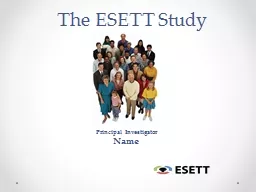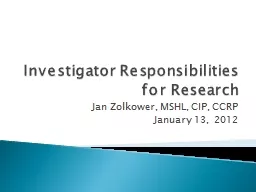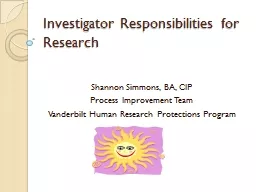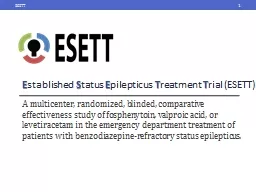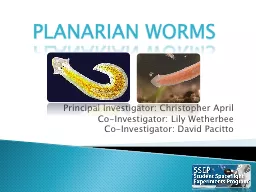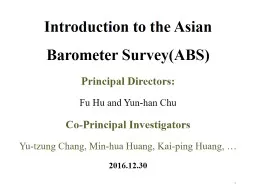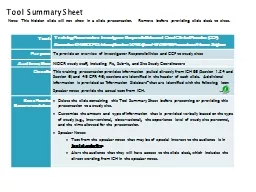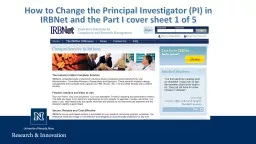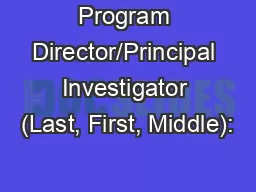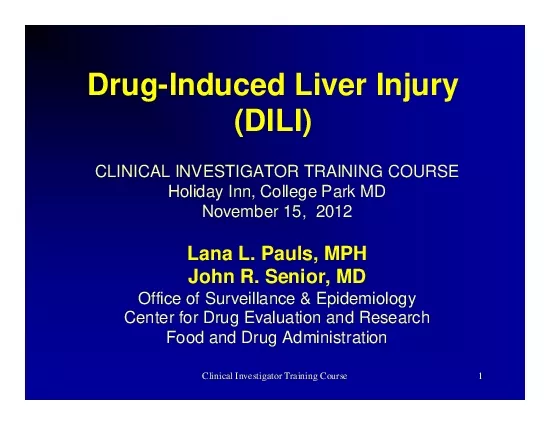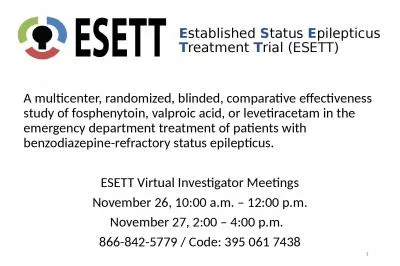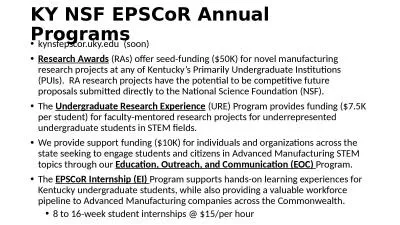PPT-The ESETT Study Principal Investigator
Author : aaron | Published Date : 2018-12-04
Name What is Status Epilepticus Status Epilepticus is seizure activity that does not stop It can cause unconsciousness and jerking activity of the body It is a medical
Presentation Embed Code
Download Presentation
Download Presentation The PPT/PDF document "The ESETT Study Principal Investigator" is the property of its rightful owner. Permission is granted to download and print the materials on this website for personal, non-commercial use only, and to display it on your personal computer provided you do not modify the materials and that you retain all copyright notices contained in the materials. By downloading content from our website, you accept the terms of this agreement.
The ESETT Study Principal Investigator: Transcript
Download Rules Of Document
"The ESETT Study Principal Investigator"The content belongs to its owner. You may download and print it for personal use, without modification, and keep all copyright notices. By downloading, you agree to these terms.
Related Documents

